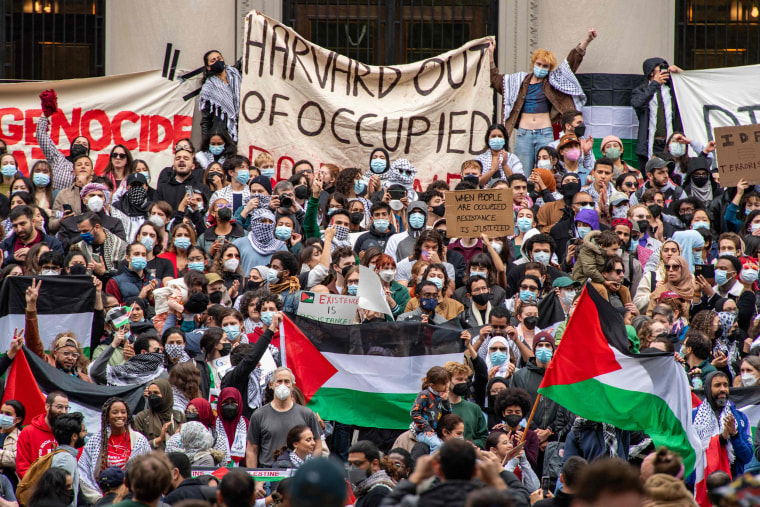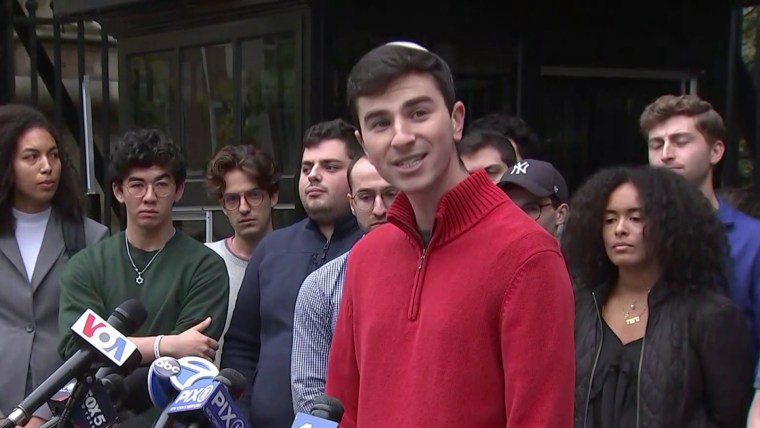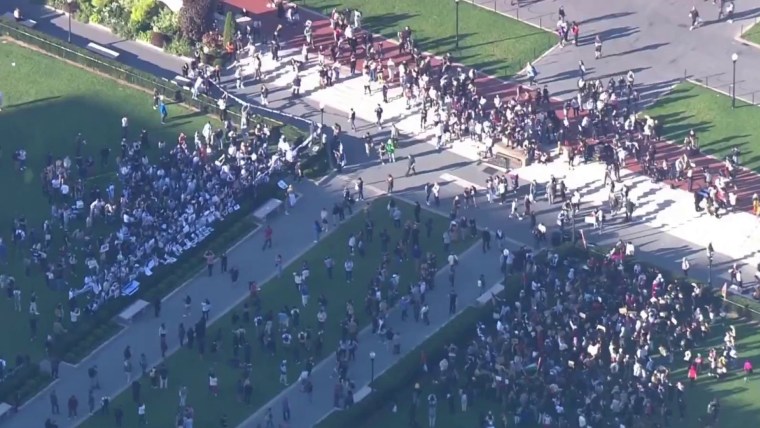The Oct. 7 massacre of Israeli civilians by Hamas and the Israeli government’s deadly reprisals against the Gaza Strip have triggered a frenzy of protests at American institutions of higher education.
The mood at colleges across the country is more tense and volatile than anything I’ve ever experienced in my four decades in academia. Columbia University restricted access to its campus during competing pro-Israel and pro-Palestinian demonstrations for fear of outsiders creating unrest. At Cooper Union, Jewish students holed up in the library when they felt unsafe during a pro-Palestinian protest outside. Cornell University recently referred threats against its Jewish center to the FBI. An attempted burning of the Israeli flag sparked a near brawl near Tulane University. Death threats to faculty and students have been reported, and the Biden administration is putting federal law enforcement resources into investigating threats on campuses.
The mood at colleges across the country is more tense and volatile than anything I’ve ever experienced.
Many fear for their safety. Many of those reporting these feelings are Jewish students. Significantly, there are also cases where Palestinian, Arab and Muslim students have experienced exactly the same thing.
Although I am highly critical of university administrations, I don’t entirely blame them for what is currently happening at their schools. I do, however, think that they’ve lost control of the public narrative about what’s happening on their campuses. Their leafy, Gothic quads are rapidly being reduced to soundstages upon which protesters chalk, post and poster their rage, line up like opposed armies, and taunt their adversaries.
An academic campus can be a protest space. To a certain degree, it should be a protest space. But to reduce it to primarily that — which is the impression left by the aforementioned narrative — is really bad for students and professors. And it’s really bad for public trust in American higher education, which is already not very high. It also omits the constructive work that has been done by interfaith and other student groups that continue their commitment to dialogue at a time of heightened emotion.

To reclaim the public narrative, university officials need to revisit their policies toward protest and free speech. They also must rethink how they convey their faculties’ knowledge about the conflict to the world at large.
Universities are places where experts research and teach about complicated issues. Ideally, scholars and students do so in a safe environment in which ideas are freely expressed, discussed, analyzed, challenged and perpetually critiqued and corrected. With all due respect to The Onion’s well-known satirical headline of 2021 (i.e., “Palestinian Family Who Lost Home In Airstrike Takes Comfort In Knowing This [Is] All Very Complicated”), the Israel-Palestinian conflict is very complicated. It is extremely difficult to make sense of that complexity, or even to discuss it, against a backdrop of nonstop protest, petitioning and disruption.
Nor do threats of violence or intimidation help us achieve our educational objectives. My first piece of advice to college administrations, then, is to think very seriously about regulating campus rhetoric that celebrates or glorifies violence.

Last week, the Students for Justice in Palestine chapter at George Washington University projected the words “Glory to our martyrs” and “From the river to the sea Palestine must be free” on the facade of a university building. While we do not know the students' exact intent, the former phrase could reasonably be construed as praising terrorists who conduct “martyrdom operations,” and the latter strikes many Jews as blatant eliminationist rhetoric. Were a pro-Israel student to march around with a placard that advocated turning Gaza into “a parking lot,” as Rep. Max Miller recently suggested, a similar line would be crossed.
It’s time for college presidents to articulate, clearly, where they draw the line between free speech and speech that immobilizes and degrades their institutional mission. There are lots of things you can’t say on college campuses. Whatever infrastructure presently exists to regulate offensive or dangerous speech — whether it comes from the diversity, equity and inclusion office, a Title IX supervisor, or even a student honor council — should be deployed. This ensures that whatever debate happens on campus safeguards students’ physical well-being (the public-facing benefits of which are obvious, if secondary).
My second suggestion has to do with how universities engage the complexity of the conflict. I am not referring to what happened on Oct. 7. A moral assessment of those atrocities, in and of themselves, is not complex. Hamas’ actions were depraved and inhumane — in a word, evil. There can be no university discourse, let alone human coexistence, if all parties cannot affirm that.
As for the broader circumstances that led to Hamas’ Oct. 7 outrages, well, yes, that is complex and precisely what universities are designed to explore and investigate. This litany of variables includes everything from the disastrous legacy of Ottoman, British and French colonialism in the Middle East, to the history of antisemitism, to Western Islamophobia, to the failure of Arab and Israeli peace movements to seize the day, to misguided American statecraft, to the rise of various extremist Islamist formations and their ideological analog in the Israeli settler movement, to broken political systems, to failed quasi-secular states, and so much more. Campus administrators have to figure out ways to get to their experts to speak and reflect on all of this complexity — both with students and with the public.
Look at how officials take the difficult steps to ensure that students can learn in an atmosphere free of intimidation.
I would hope these administrators would refrain from simply platforming two opposed belligerents, performatively draped in either Palestinian or Israeli flags. I regret to say that this is often what passes for “dialogue” in public-facing scholarship. Rather, administrators have to figure out which professors are producing real scholarship (versus predictable activism), which ones are willing to listen seriously to opposing views, and which ones are able to admit when they are wrong. It’s hard to find thinkers like that, but featuring their work is the challenge for American higher education.
Measure a university not by what its president declares in a lawyered-up, carefully worded letter to the community about "The Tragedies in Israel and Gaza." Instead, look at how officials take the difficult steps to ensure that students can learn in an atmosphere free of intimidation. Look to see if they enable their professors to use their knowledge to better understand — and perhaps alleviate — the pain and suffering created by this never-ending, godforsaken conflict.

